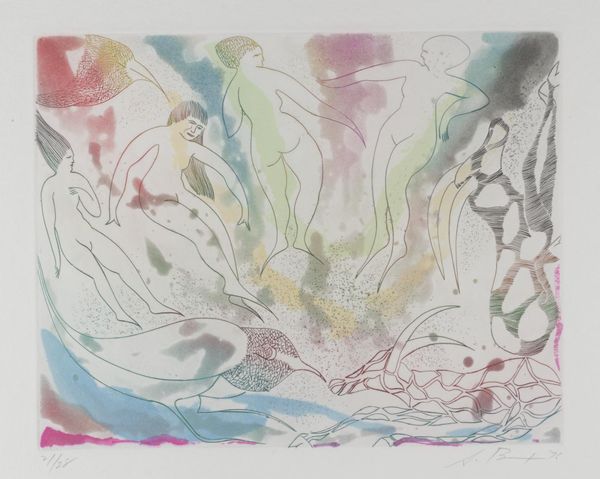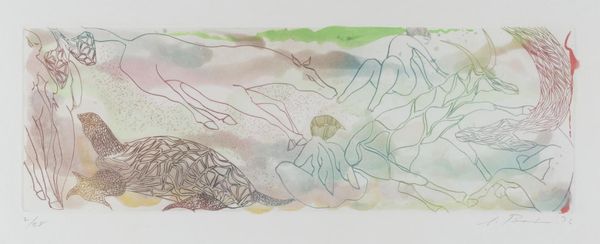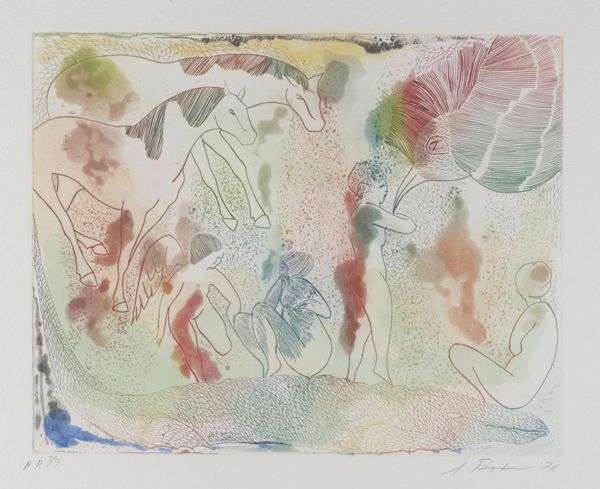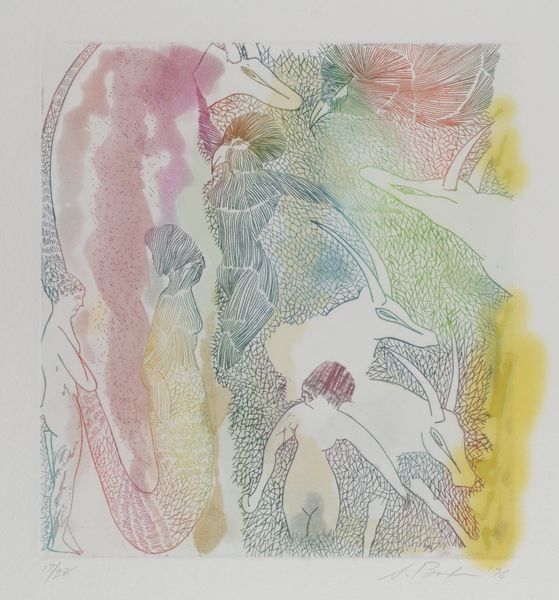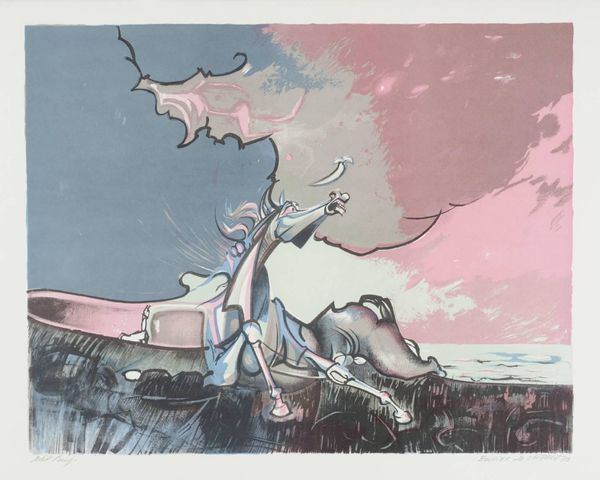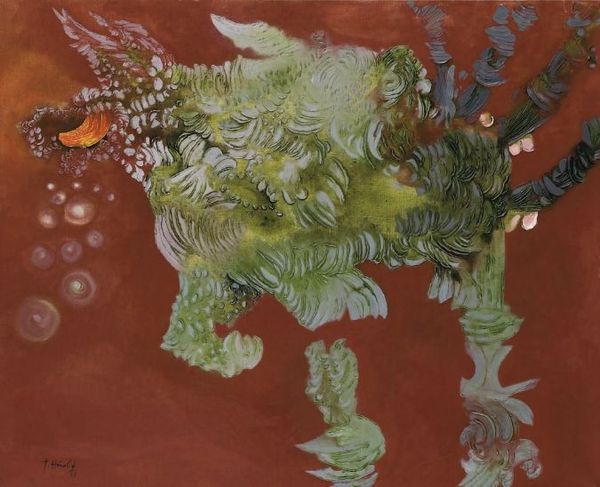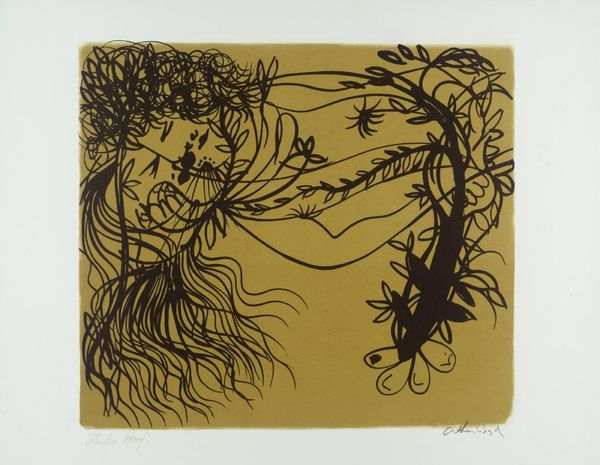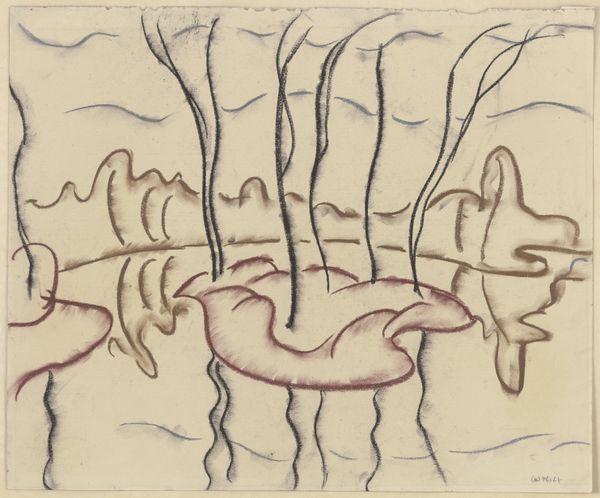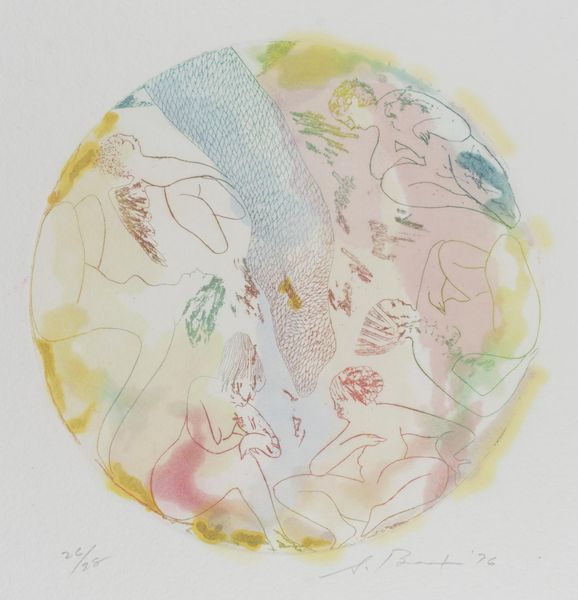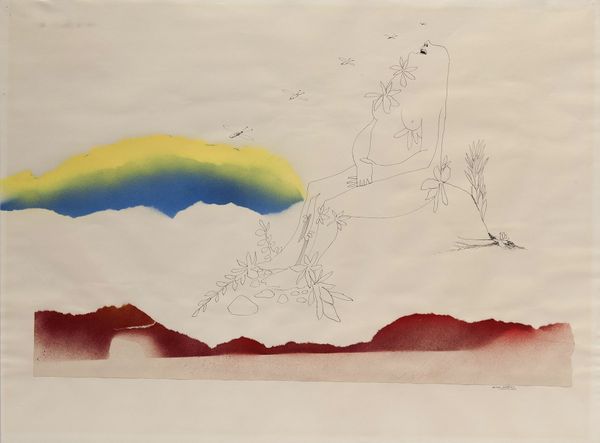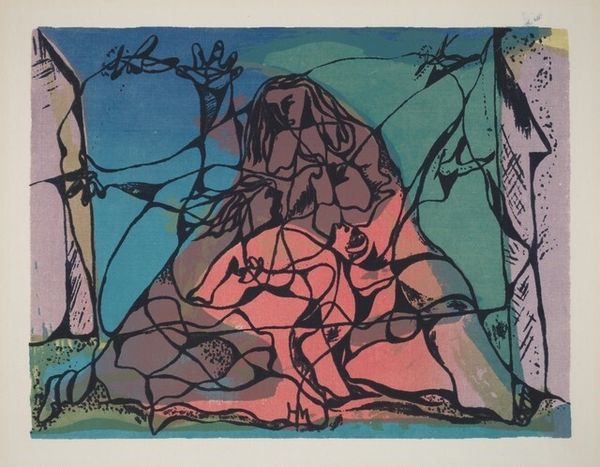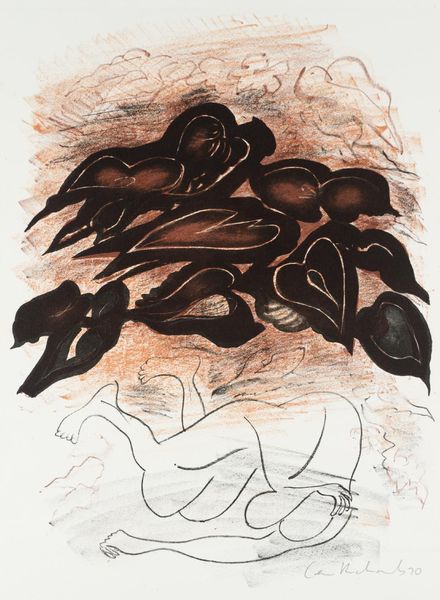
Dimensions: image: 203 x 380 mm
Copyright: © The estate of Stanley Boxer | CC-BY-NC-ND 4.0 DEED, Photo: Tate
Editor: This is "Feybowlofplay" by Stanley Boxer, a print from 1976. It has this delicate, almost ethereal quality, and I'm really drawn to the textures created through the printmaking process. What stands out to you about the materials and production? Curator: I’m interested in how Boxer uses printmaking, traditionally a medium for multiples and thus wider accessibility, to depict a scene of leisure, perhaps even decadence. Consider the paper itself, its cost, and who would have consumed such an image. Editor: So, you're suggesting the material itself clashes with the subject matter? Curator: Precisely. Is Boxer making a statement about class, taste, and the democratization of art, or is he simply exploring the aesthetic qualities of the medium, divorced from its inherent social context? It certainly gives one pause, doesn't it? Editor: It does! It makes you think about the economic factors behind even the most beautiful image. Curator: Exactly!
Comments
Join the conversation
Join millions of artists and users on Artera today and experience the ultimate creative platform.
tate 7 months ago
⋮
Stanley Boxer is best known for his large scale abstract paintings which have a rich sculptural quality produced by thick, impasto brushwork. Boxer’s paintings were championed by American modernist critic Clement Greenberg (1906-1994), famous for his insistence that painters should eliminate subject matter in their work, aiming instead for the purity of abstraction. When considered in relation to his paintings, the prints Boxer produced at Tyler Graphics between 1975 and 1979 seem somewhat of an anomaly. Over this period, he created several series of figurative works, illustrating whimsical scenes featuring animals and winged figures. Boxer had, however, been making drawings of this nature throughout his career, and he insisted they were closely connected to his abstracts, made with similar gestures and motivation.
